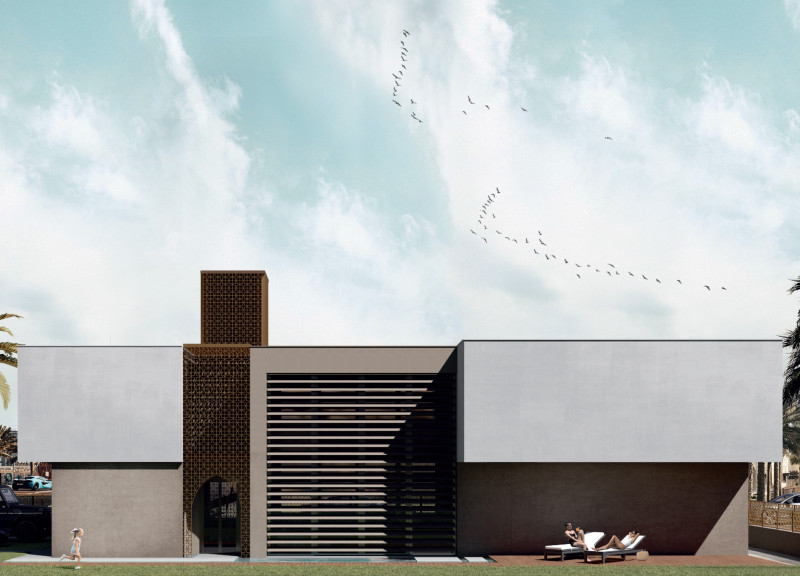5 key facts about this project
Upon entering the project, one encounters a seamless flow of space that encourages movement and exploration. The layout is meticulously designed to facilitate accessibility and connection, with strategically placed pathways leading to key areas such as communal spaces, private residences, and recreational zones. Each of these sections is not only functional but also invites social interaction, emphasizing the importance of community within the urban landscape.
The architectural design is characterized by its thoughtful material use, which plays a crucial role in shaping the building's identity. The combination of concrete and steel offers both structural resilience and an industrial aesthetic, while expansive glass elements allow natural light to flood interiors, fostering a sense of openness and tranquility. Wood features prominently in the finishing touches, adding warmth and a tactile quality that contrasts with the more industrial materials, creating a balanced sensibility throughout the design.
Significant attention has been given to sustainability principles in this project. The incorporation of green roofs and integrated landscaping not only enhances the visual appeal but also promotes biodiversity and aids in managing stormwater. The use of renewable materials further reflects a commitment to environmental stewardship, showcasing how modern design can harmonize with ecological considerations. This approach not only contributes to the well-being of its inhabitants but also aligns with broader trends within architecture that prioritize sustainability and resource efficiency.
Unique design strategies are evident in how the project engages with its context. The architects have drawn inspiration from local architectural traditions, allowing the building to respond thoughtfully to its surroundings. Elements such as cantilevered structures and shaded terraces not only provide visual intrigue but also address climatic challenges, allowing for comfortable outdoor spaces that can be enjoyed year-round. The design relationships between indoor and outdoor environments are carefully crafted, encouraging a fluid transition that enhances overall usability.
Landscaping also plays a significant role in defining the experience of the project. The integration of greenery into both the immediate surroundings and elevated areas creates pleasant outdoor environments for residents and visitors alike. These spaces are designed not merely for aesthetics but to foster community interactions, serving as informal meeting spots that invite social engagement among users.
This project ultimately stands as a testament to thoughtful architectural practice, merging practical needs with a deep respect for the surrounding context. The attention to detail in architectural plans ensures that every element serves a purpose while contributing to the overall aesthetic. By sharing ideas through architectural sections and designs, the project communicates its intentions clearly, inviting the observer to appreciate the craftsmanship and ingenuity involved.
For those interested in delving deeper into the architectural ideas that shape this project, further exploration is encouraged. Investigating the detailed architectural plans and sections will provide a richer understanding of how this design integrates form, function, and community-oriented thinking into a cohesive and engaging architectural experience.


























